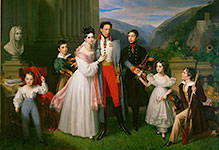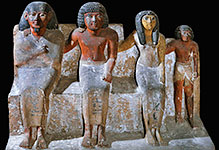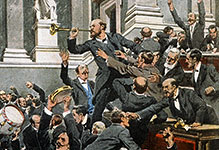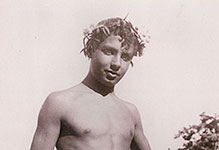
Society
Personalities, Aristocracy, Politics and Portraits, Rulers, Emperors and Kings, Crowds and Demonstrations.

#03030233
Emperor Valerian (ca. 200-260 CE) kneels in front of Sassanid King Shapur I (24...

#03030235
Statue of Nofret wearing a wig and bead necklace (detail). Painted limestone st...

#03030245
Wooden sculpture of Queen Ahmose Merit-Amon, wife of Amenophis I. From Deir el-B...

#03030248
Pharaoh Amenophis III (1391-1353 BCE) in chariot wearing a crown with the uraeus...

#03030249
Pharaoh Amenophis III (1391-1353 BCE) in chariot wearing a crown with the uraeus...

#03030251
Pharaoh Akhenaten and Nefertiti offer libation to God Aten. Relief from the shr...

#03030253
Sarcophagus of Pharaoh Seti I. Painted wooden sarcophagus; New Kingdom (19th dy...

#03030257
The lid of one of four canopic jars found in tomb No.55 in the Valley of the Kin...

#03030264
Amenirdis I, Kashta's daughter, was established as God's Wife of Amun in Thebes....

#030401 9
Fath Ali Shah (1762–1834), the secong Qajar King of Persia from 1797 to 1834, ne...

#03040128
Nasser-al-Din Shah (1831-1896), Qajar King of Persia End of the 18th century;...

#03040134
Khosrau I and his vizir in front of the ruins: page of a manuscript of "The Sto...





